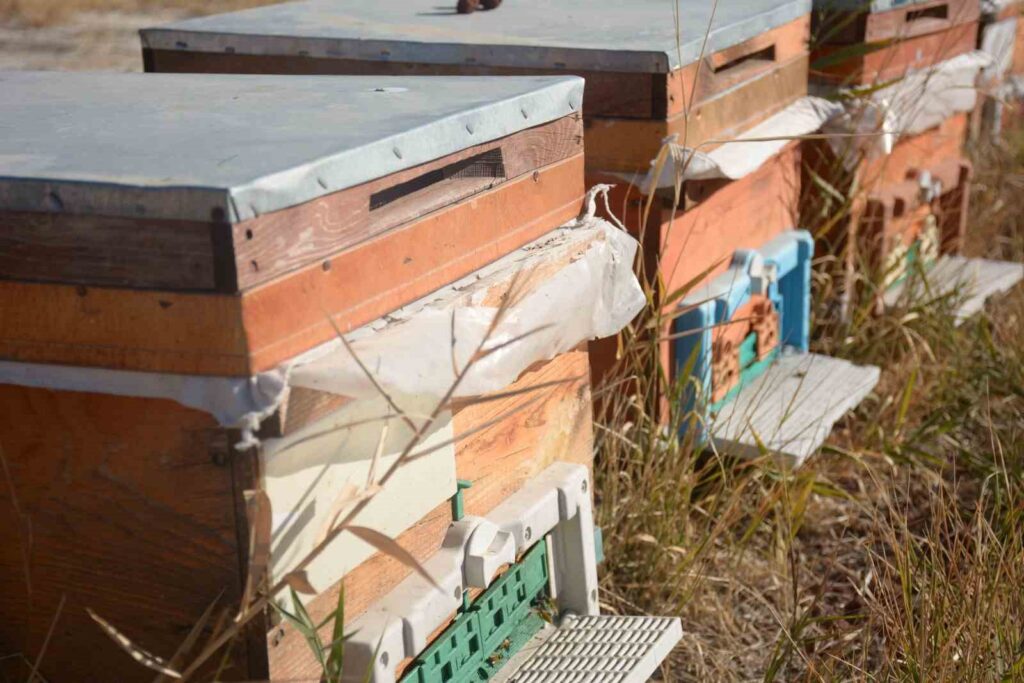Electromagnetic fields threaten the future of bees.
The Dean of the Faculty of Veterinary Medicine at Ankara University, Prof. Dr. Ender Yarsan, stated, “Electromagnetic fields that will be formed differently by base stations or high voltage lines will have a negative impact on bee health.” 9 million 224 thousand …

Prof. Dr. Ender Yarsan, Dean of the Faculty of Veterinary Medicine at Ankara University, stated, “The electromagnetic field that will be formed differently by base stations or high voltage lines will have a negative impact on bee health.”
Turkey, with 9 million 224 thousand 881 bee hives, ranks second in the world in honey production. According to data from the Turkish Statistical Institute (TÜİK), the country produced 114 thousand 889 tons of honey last year, while changing climatic conditions, fluctuating temperatures, and changing electromagnetic fields due to urbanization are threatening bees. Research published in the American journals “Journal of Experimental Biology” and “Proceedings of the National Academy of Sciences” indicates that there is a magnetic interaction that guides honey bees in finding their hives and food. Changes in the electromagnetic waves that bees follow daily create problems in finding their food and hives.
Prof. Dr. Ender Yarsan evaluated the preservation of bee populations in an interview with an IHA reporter. He explained that if the health of bees is not taken into account, collective bee deaths and colony collapses may occur. He emphasized that attention should be paid to bees during agricultural pesticide application.
“Attention must be paid to the health of bees during agricultural pest control”
Prof. Dr. Yarsan addressed the factors that cause collective deaths and losses in bees, stating:
“It is especially necessary to express the issues that will eliminate these factors. Agricultural pesticides come first among these. If pesticides, which we call pesticides, are used irresponsibly, and if such spraying is done near a beehive and the timing is not set correctly, for example, collective bee deaths have recently occurred in regions such as Çukurova, Bursa, or Aydın. In this sense, pesticides are extremely important. Significant poisonings and deaths due to pesticides have occurred in bees. The use of pesticides has been banned since 2018.”
Yarsan also stated that the medications used for bee diseases must be used responsibly. He emphasized that a study conducted in Turkey found a resistance rate of 69% against medications used for varroa, an important disease in bees.
Threat of “false spring” to bees
Prof. Dr. Yarsan noted that climate change has negative aspects for bees as well, saying, “When the temperature drops below 15 degrees, they enter a physiological state called winter sleep. In other words, they shut themselves down. If the temperature rises ‘falsely’ above 15 degrees, they quickly leave their hives as if spring has come to collect pollen and nectar. However, since the trees do not bloom, they cannot find pollen, which creates a negative situation for bees. Therefore, climate change or excessive rainfall brings along diseases related to the intestinal system, which we call ‘luesema.’ Thus, these are the negative factors of climate change on bees.”
Prof. Dr. Yarsan stated that, apart from climate change, disasters such as floods, fires, storms, and earthquakes also have significant negative effects on bees.
“Electromagnetic fields negatively affect bee health”
Prof. Dr. Yarsan emphasized that electromagnetic fields have a serious impact on bees, stating, “The formation of an electromagnetic field, whether through base stations, high voltage lines, or mobile phones, will negatively affect bee health. When a bee leaves its hive, it collects pollen or nectar as a target by following the polarized light, sunlight, and the electromagnetism present in the environment.”
Prof. Dr. Yarsan continued his remarks:
“A worker bee operates in an area of about 13 kilometers. If there is a disruption in the electromagnetic field here, the bee cannot collect the food item we mentioned as a target. If it collects it but cannot find the hive when returning, the electromagnetic field causes disruption in the bee’s physiological and behavioral patterns.”
He pointed out that this situation also has negative effects on the queen bee, stating that it will lead to problems in brood and hatching rates. Yarsan said, “If it cannot bring food back to the hive, there will then be a deficiency in protein. Protein is a structure used by the bee in various immune-related mechanisms. It makes up 1% to 10% of hemolymph. If there is an electromagnetic field and the bee cannot bring food back to the hive, and if the protein level in hemolymph drops below the amounts we mentioned, then adverse events related to tissue damage may develop in the bee.”
Prof. Dr. Yarsan also emphasized that the most significant negative effects are on enzyme functions and the immune system.






